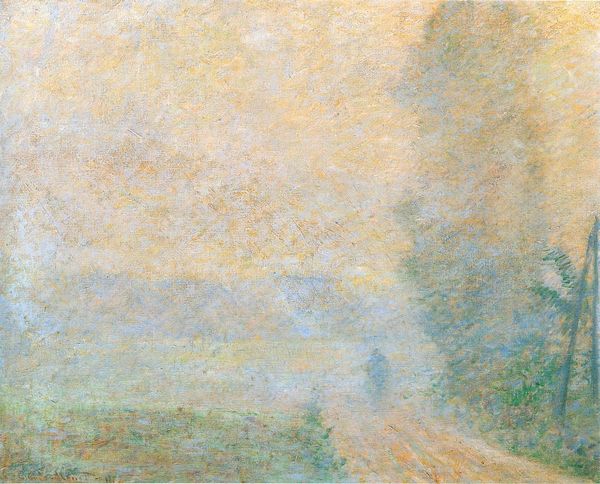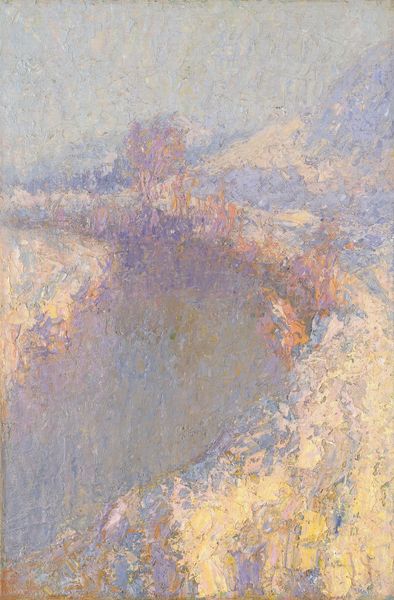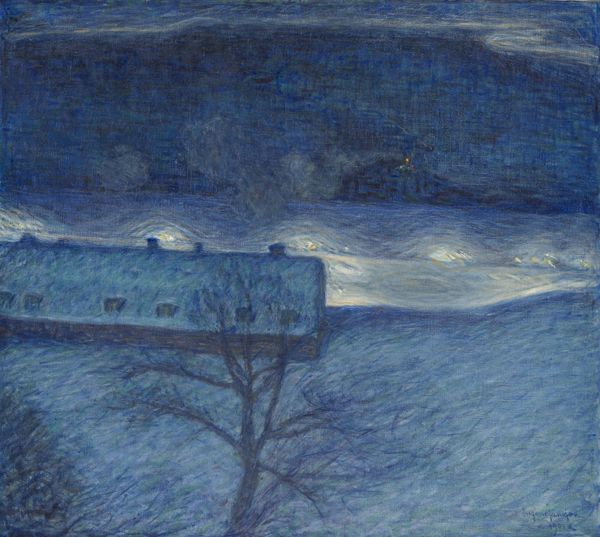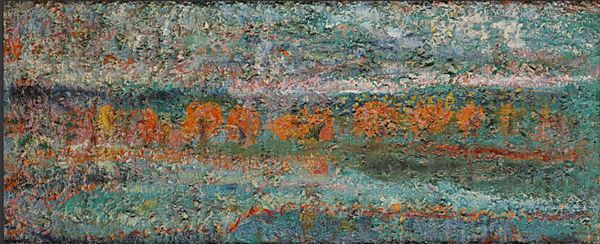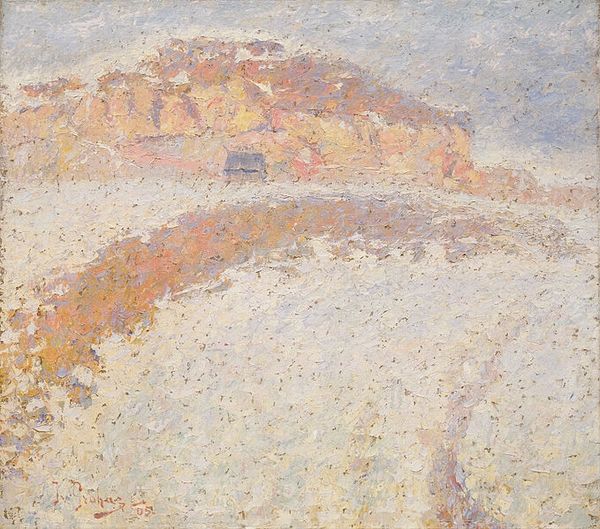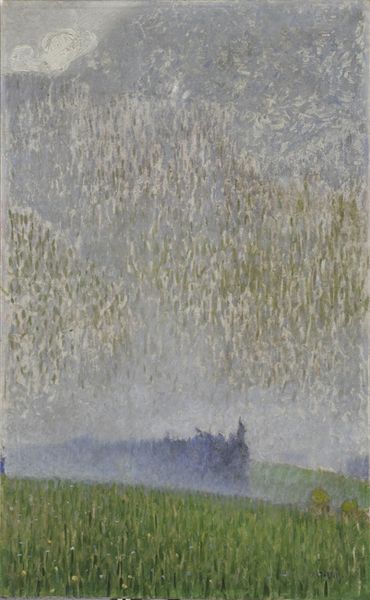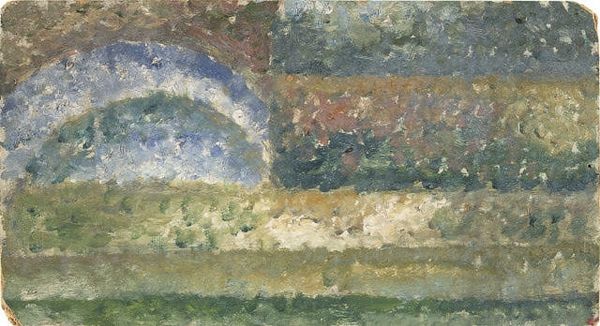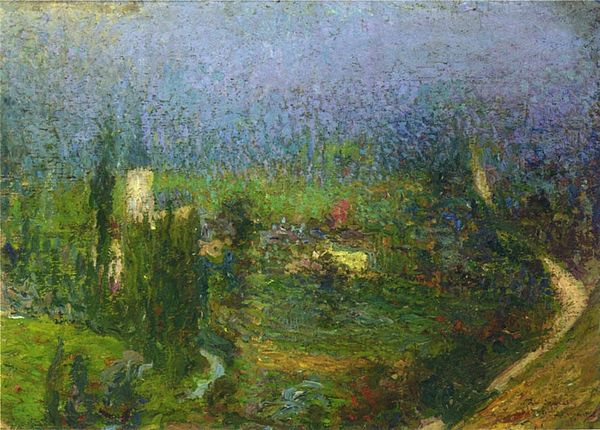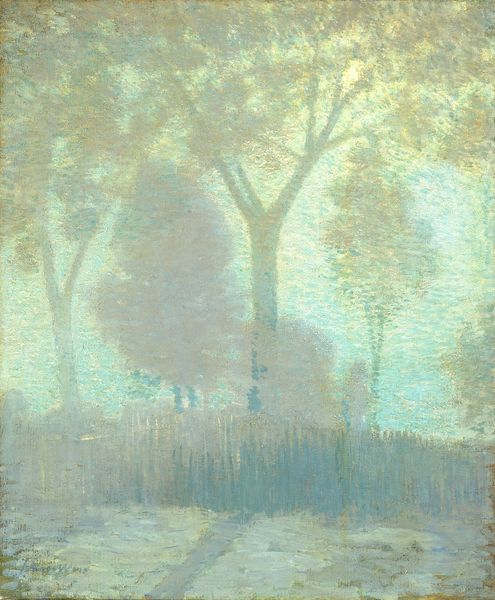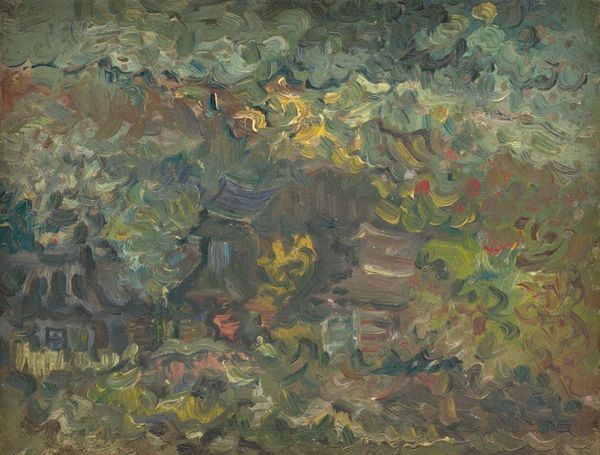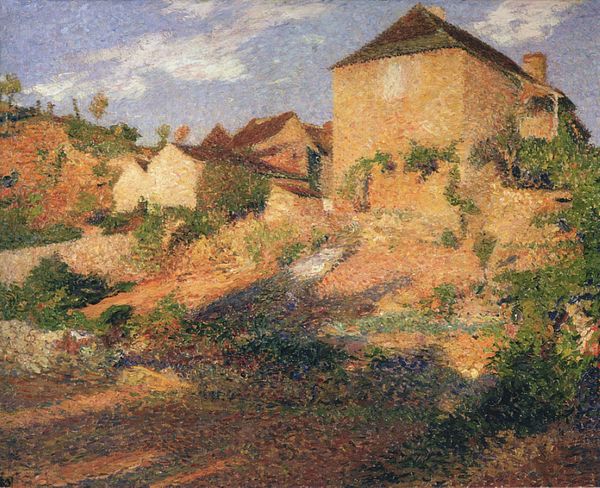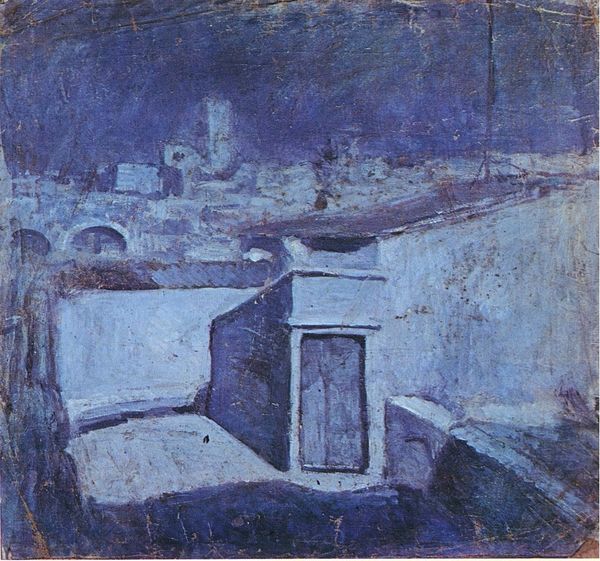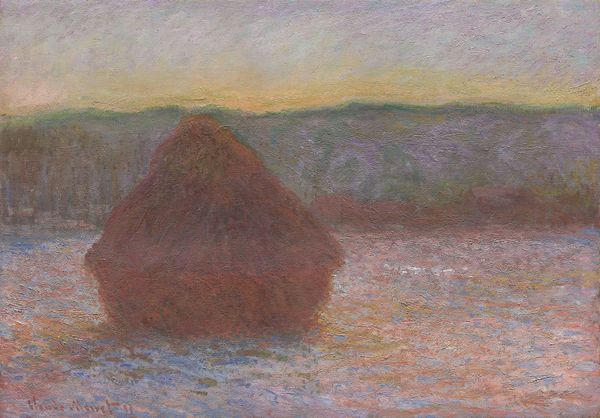
Copyright: Public domain
Curator: Ivan Grohar's "Zimsko jutro," created in 1911, captures a winter morning through the lens of Post-Impressionism, employing oil paint with an impasto technique. Editor: There's a stillness here that almost feels melancholic, wouldn't you agree? The muted blues and grays really set the mood. The rough textures remind me of weathered buildings. Curator: The texture certainly contributes to its evocative power. Grohar was working at a time of great national and cultural upheaval. Perhaps this subdued palette is reflective of the sociopolitical landscape. The landscape here is almost devoid of life, just these very basic architectural forms emerging from the snow and fog. It speaks of simplicity and the struggle of the rural population. Editor: I see a dialogue about identity, a negotiation between tradition and modernity in what seems a fairly conservative art scene. Does this artwork try to grapple with shifting paradigms of labor and value within rural settings? Curator: It does. Grohar consistently utilized rural scenes to project ideas of nationhood, in search of Slovenian cultural memory. One of the symbols in this case are actually the heavy textures themselves which reference an enduring link to nature and labor that were foundational for him to establish a visual national identity. Editor: This emphasis on national identity formation raises questions about inclusivity. Are marginalized voices present, or does this portrayal serve primarily the dominant culture's narrative? Does it include minorities, and particularly people from rural areas from a lower socioeconomical strata? Curator: It is vital to acknowledge these blind spots. However, we can not ignore Grohar's significant contributions in building cultural identity. Through its visual language of impasto and simplified forms, his art captures the shared cultural history and landscapes to unify diverse populations, building solidarity and continuity across generations. Editor: Food for thought. It leaves us reflecting on the complicated nature of cultural memory and how these idealized images still resonate today in popular depictions of the Slovenian countryside. Curator: A reminder of the past’s continuing hold on the present, both the empowering and the problematic.
Comments
No comments
Be the first to comment and join the conversation on the ultimate creative platform.
